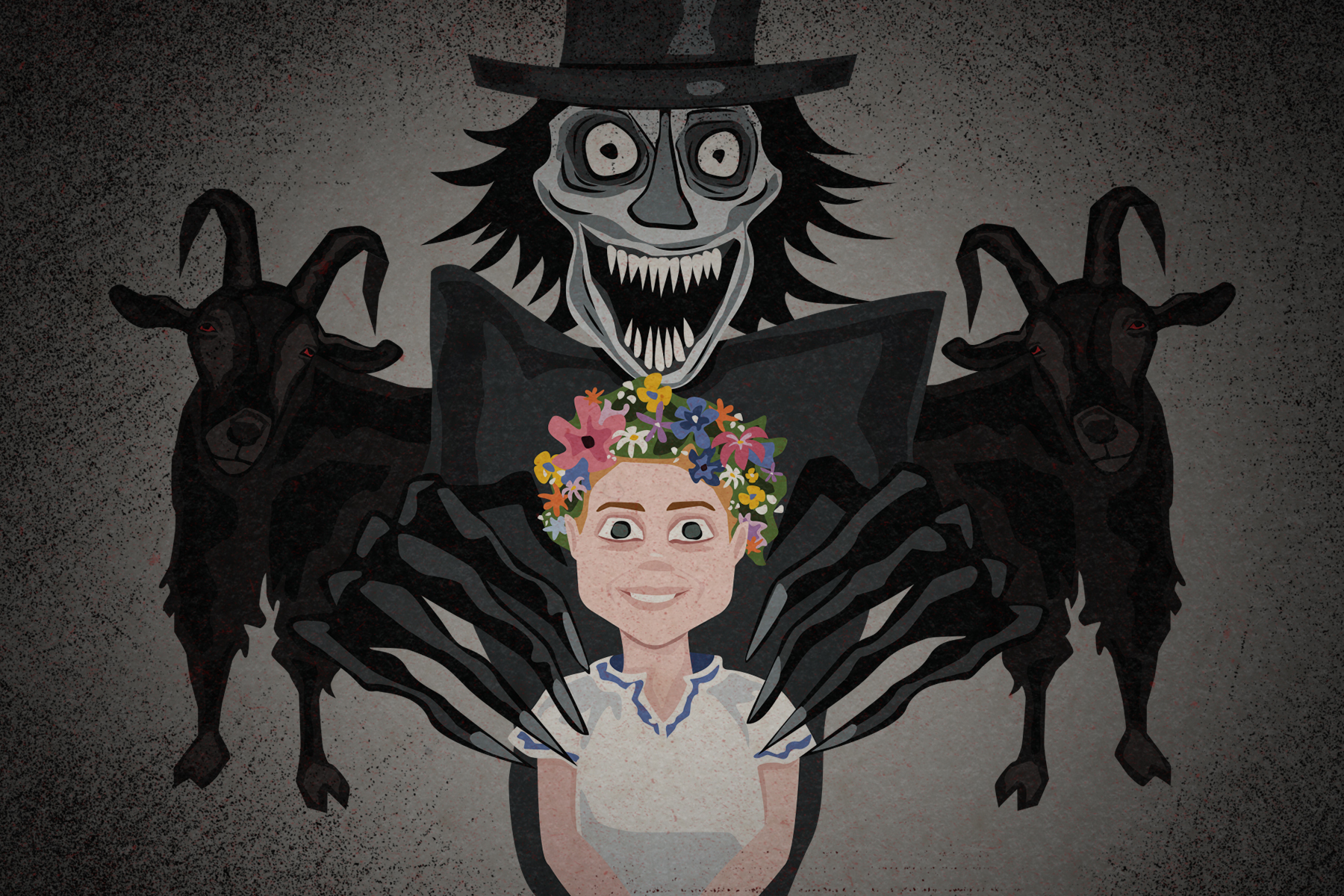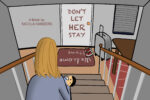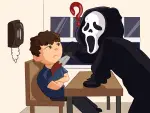Say goodbye to Michael Myers, Jason Voorhees and Ghostface: The horror films of the 2010s are moving in a new direction from those of the decades before.
Or, at least, a certain portion of them is. This categorization is populated by names like Jordan Peele and Ari Aster, which mainstream media has dubbed “elevated horror.” Some horror fans resent the title, and some deny that this subgenre exists altogether. So what’s all the fuss about elevated horror?
Defining Elevated Horror
Elevated horror can be difficult to pin down. The argument over its definition might have something to do with the pushback against its legitimacy. Still, looking at the films often associated with the genre gives some clue as to what they all have in common. Some of the more popular titles mentioned in this context are Jordan Peele’s “Get Out,” Veronika Franz and Severin Fiala’s “The Lodge,” Ari Aster’s “Midsommar” and David Robert Mitchell’s “It Follows.”
Elevated horror refers to films in which psychological manipulation takes precedence over jump scares and gratuitous violence — though, with that being said, the aforementioned films still incorporate a decent amount of the latter. Elevated horror uses metaphors and allegories to make larger points about society or the human experience.
Take Jennifer Kent’s “The Babadook” as an example. It focuses on a single mother trying to cope with the death of her husband as she raises her difficult son. The two fear that they are being pursued by a supernatural entity after reading a mysterious children’s book that seems to threaten their very existence. Though the movie has its fair share of scares, it’s really an allegory for the all-consuming agony of grief and the trials of living with it.
There are a variety of reasons why elevated horror as a concept is so attractive. It implies content that is cerebral and esoteric to a level that might not generally be associated with horror films. It promises less “Jigsaw” bloody mutilation and more Peele social thriller grandiosity.
The Legacy of “The Witch”
While it’s complicated to say where the genre began, it’s a bit easier to figure out where the “elevated horror” title came into play, and that’s with the critical success of Robert Eggers’ “The Witch.” The 2015 film tells the story of a family who is banished from their Puritan settlement in 1630s New England. On the edge of a vast wilderness, the family’s crops begin to fail and they encounter loss and great evil, which they believe to be caused by black magic.
“The Witch” is a masterclass in tension. A breathtaking soundtrack and foley accompany intense visuals and memorable performances. While the film drops a rather disturbing bombshell in the first act, it retains most of its horror for the final one, leaving audiences to anxiously wait for the other shoe to drop.
It’s both a cohesive aesthetic goldmine and a cinephile’s dream. Eggers manages to perfectly capture a particular moment in history and saturate it with contemporary sensibilities. Most importantly, the film is terrifying. The elusive Black Phillip, a goat suspected to be the devil himself, is just one of the elements that make the film so compelling.
Like most media that incorporates imagery of Salem, “The Witch” offers a lesson in the mistreatment of women and feminine rage. It is perhaps that didacticism, along with the film’s obvious quality of production, that caused audiences to differentiate it from other horror films. And though some movies like “It Follows” and “The Babadook” have been retroactively added to the elevated horror canon, Eggers’ film essentially birthed the genre.
The Fallacy of Genre
Many people deny that elevated horror even exists. To their credit, the sociopolitical themes that are associated with it have always existed in horror. Classics like “The People Under the Stairs” and “Night of the Living Dead” have been saying something of value with their craft long before Peele stepped into the horror arena. Acting as if those messages haven’t always been there is certainly reductive.
It’s clear that people want a way to set certain movies apart from others. Genre is helpful for categorizing films, but this particular effort runs deeper. The word “elevated” implies that these movies are above their counterparts. It’s hard not to come off as elitist, especially when the directors of elevated horror are so clearly inspired by the works of genre classics.
Still, there’s a reason why films might want to distance themselves from the horror genre, and it has everything to do with marketing. Being labeled as a horror movie can actually be damaging; it’s the reason that films like “Se7en” and “The Invitation” favor the “thriller” label, despite fitting into the horror genre just as easily. After all, genre in and of itself is ultimately arbitrary. Horrors can have comedy in them, just as dramas can be horrifying. It has more to do with a studio’s marketing techniques than it does actual content.
“The Witch” could be called an elevated horror. It could also be called a psychological thriller, a folk horror or an arthouse horror. The same could be said for many of the movies in this subgenre. All of these categories are filled with gray areas where discretion is key. Really, horror itself is all subjective. What’s terrifying to one viewer might just seem silly or preposterous to the next. By that logic, I could posit that “The Omen” isn’t actually a horror film because I don’t personally find demonic children scary.
There’s no doubt that the horror genre has its flaws. Slashers prioritized violence against women and people of color for decades, and unnecessary gore has also been a given. However, that’s only a portion of the genre, and treating the entire thing as lesser is intensely diminishing.
At the same time, I also see the value of putting a name to the specific aesthetic — often especially prevalent in A24 properties — of movies like “Hereditary” and “The Invisible Man.” These films have more in common with each other than they do with the rest of the horror genre, so subcategories make sense. Elevated horror just might not be the correct one.
Either way, their collective successes cannot be ignored. These projects have come to dominate the mainstream in a way that genre films rarely do. Only six horror movies have ever been nominated for best picture at the Oscars — though several, like “The Silence of the Lambs” and “Black Swan,” intentionally opted to be called thrillers instead — so the award season success of “Get Out” was notable. With more works from the likes of Peele and Eggers in the books, the future of elevated horror looks promising. All it needs is a less pretentious name.

















